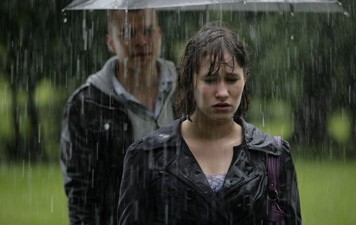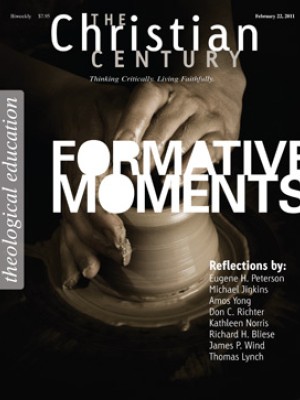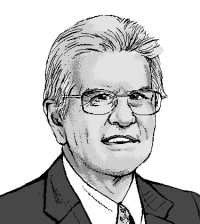Losing their religion

Somewhere along the way, European cinema lost its religion. As recently as 1995, the Vatican published a well-informed list of 45 "great films," with a predictable emphasis on religious and spiritual themes, and European contributions were much in evidence. The catalogue was impressive in its breadth: it included an Eastern Orthodox classic like Andrei Tarkovsky's Andrei Rublev (1969), about the legendary icon painter, as well as Pier Paolo Pasolini's ruggedly Marxist Gospel According to St. Matthew (1966). The compilers were by no means looking for syrupy piety. Re-markably, they mentioned a significant number of then-recent entries of the highest quality, including Gabriel Axel's Babette's Feast and Krzysztof Kieslowski's series The Decalogue. Not long ago, it seemed, European religious cinema—broadly defined—was thriving.
If the Vatican ever tore itself away from its present troubles long enough to compose a similar list, I wonder if its clerics could find a comparable range of offerings. The question resonates far beyond the world of film trivia. Some 50 or 60 years ago, the great filmmakers treated religious themes seriously and placed those themes firmly on the cultural landscape. These auteurs created brilliant studies of Christian sanctity, and sometimes presented the churches and their clergy in heroic roles (like the indomitable Resistance priest in Roberto Rossellini's 1945 film Open City). While these films might have been critical of orthodoxies or hierarchies, they presented Christianity as something demanding respect and inquiry. Faith mattered. But what would a culturally literate person take from European films made in the past decade or so?
Read our latest issue or browse back issues.
One major problem is the lack of films that address mainstream or institutional religion as opposed to general "spirituality." Looking only at films with a particular ecclesiastical setting, one finds a simple and almost uniform message: the church is a model of organized hypocrisy, dedicated to the repression of individual freedom, above all in sexual matters.
Moviegoers would have little trouble organizing an Anticlerical Film Festival, with entries from some of Europe's greatest filmmakers. In Bad Education (2004), Spain's Pedro Almodóvar dealt with the sexual abuse of boys in a Catholic school. The Spanish-Mexican coproduction The Crime of Father Amaro (2002) revealed a hypocritical priest who seduced and betrayed a young woman. A pederastic priest is the antihero of the Italian film Sacred Silence. The 2002 Irish film The Magdalene Sisters exposed the maltreatment of troubled young girls by church-run industrial schools, under the auspices of savage and perverted nuns. When you meet a cleric in a modern European film, expect depravity.
The apparent evils of Christianity are not confined to explicit sexual abuse. Churches also conspire to rape the mind. The Danish production Worlds Apart (2008) describes a teenage girl brought up in the Jehovah's Witnesses faith but ostracized when she tries to live the life of an ordinary young European. As a study of life in a strict religious sect, the film is excellent, but it stands out as one of the very few treatments of everyday Christian life of any kind in contemporary Europe. In Europe, far more than in the U.S., religion appears in cinema as a problem, and the solution to that problem is usually liberated sexuality. Consider the 2000 film Chocolat: it was set in a grossly repressed Christian village, and the two adjectives are close to synonymous.
If modern Europe has produced major Christian films, their settings are so exceptional that they can have little relevance to ordinary religious practice. One personal favorite of mine is the 2006 Russian film The Island, a biography of a fictional Orthodox monk, a charismatic saint of immense spiritual power. Despite its modern setting—the plot revolves around an unresolved wrong committed during the Second World War—the film is rooted in age-old traditions of Christian piety. If films had been made during the great age of the Orthodox saints and holy fools, they would have looked like this.
Equally neomedieval was Into Great Silence, a visually stunning 2005 documentary about the lives of French Carthusian monks. The recent Vision explored the life of Hildegard of Bingen. Like The Island, these films were critically acclaimed, but what does that reception say about contemporary attitudes to faith? Religion, it seems, may be a vital and transforming force, but it is the preserve of highly trained mystics dedicated to life apart. Religion is a matter for trained professionals. Ordinary people are firmly being told: don't try this at home.







